You Saw it as a Child, but it’s Time to See it Again! The National Gallery of Art
Explore the National Gallery of Art's rich collection and relaxing atmosphere, perfect for art lovers seeking history and beauty in DC.

5th in a series of Museums Women Love to Visit
If you grew up anywhere near Washington, DC in the last fifty years, then you probably visited the National Gallery of Art as a child while on a vacation with your family. Along with seeing the sights of the Capital, your parents likely took you to see the iconic art on display at the National Gallery because it was “educational.” However, if your only visit to this wonderful Gallery was as a child, then you owe it to yourself to visit again, to see this art with adult eyes.
My recent visit to the National Gallery was a real treat: it’s full of interesting, complex art that is easily accessible. The gallery offers great tours, movies, and unique special events to educate and expand your knowledge about the art within the galleries. In addition, there are five distinctive restaurants to have lunch, including one that is near a delightful water cascade. My favorite cafe, however, is the Garden Café which has European-style entrees, desserts and coffee treats.
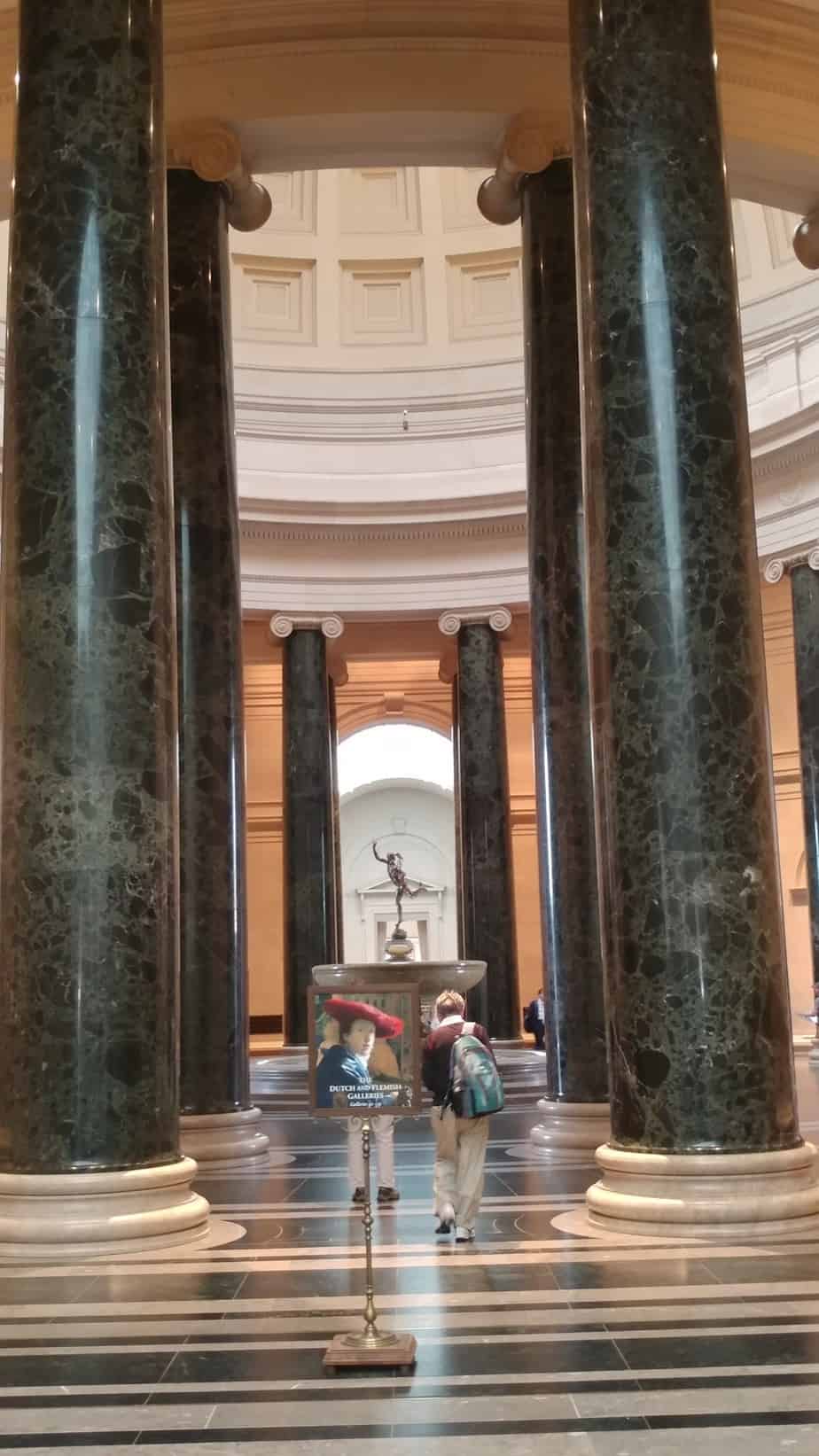
A Majestic Entry
Your first impression of the National Gallery is that it is majestic. The four main floor entrances of the West Building lead to a central rotunda modeled after the ancient Roman Pantheon. From there, galleries full of art flow out in all directions, and you can wander through in an in/out pattern, never having to reverse your steps to see what is on display.
The National Gallery of Art was conceived and first endowed by Andrew W. Mellon (1855–1937), a very wealthy financier and art collector from Pittsburgh who came to Washington in 1921 to serve as secretary of the treasury. It was his desire to create an art gallery to rival the great museums of Europe, so he endowed it with his great personal art collection and then encouraged other wealthy Americans to do the same. These “Founding Benefactors,” such as Samuel H. Kress, Chester Dale, and Paul Mellon, donated private collections that contain many of the best of art pieces of the last 500 years, including the French Impressionists, rare paintings by Vermeer and the only Da Vinci painting displayed outside of Italy.
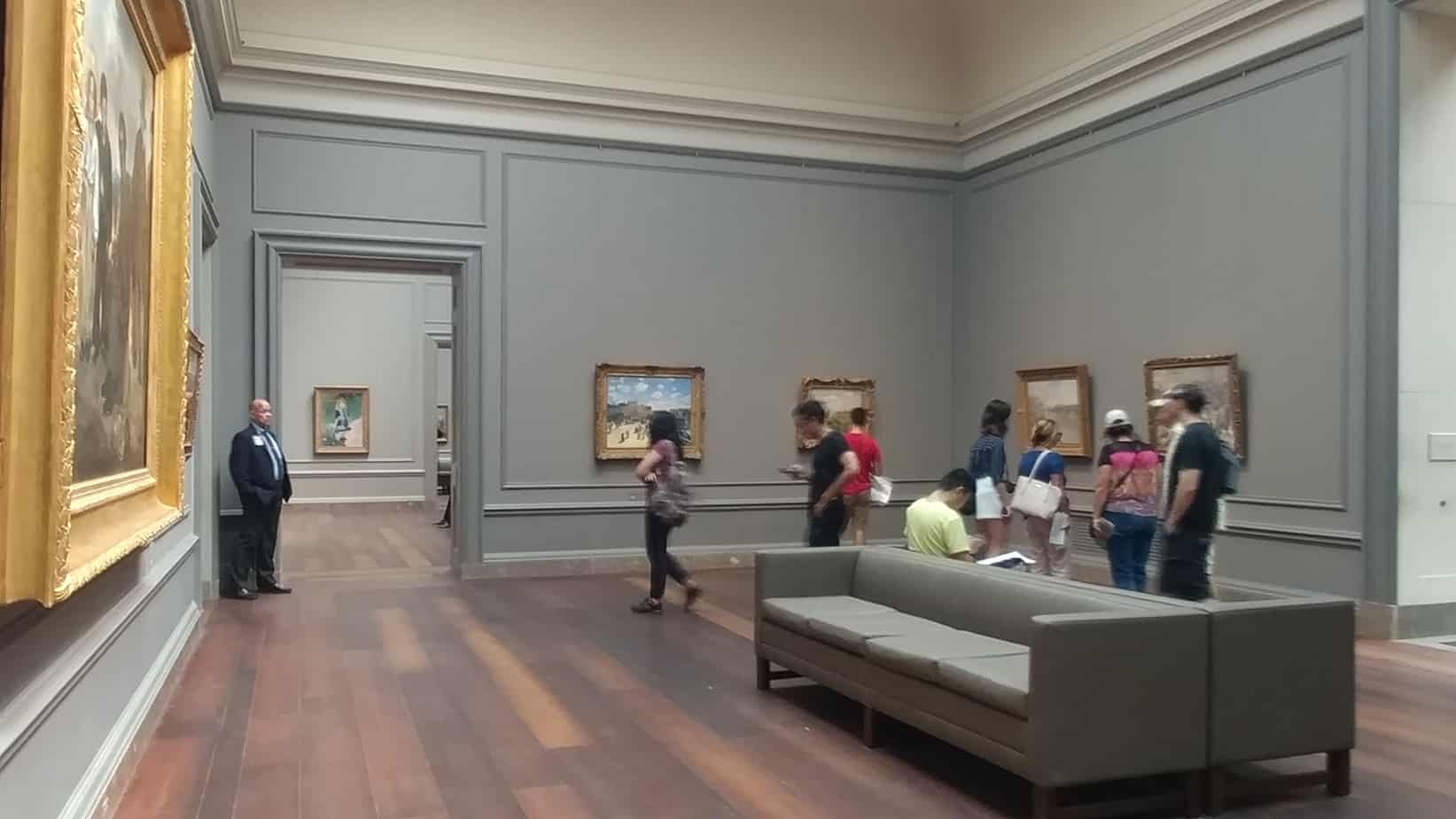
A Taste of France
My favorite treat is to explore the galleries which house the scenes of 19th century Paris as painted by Renoir, Monet, and Degas. While the rooms can be crowded on the weekends, if you can visit on a weekday, you will find small crowds, with room to sit while you contemplate the paintings. Most visitors will see many paintings so familiar that they have almost lost their ability to surprise, but I encourage you to search out the small gems of each genre.
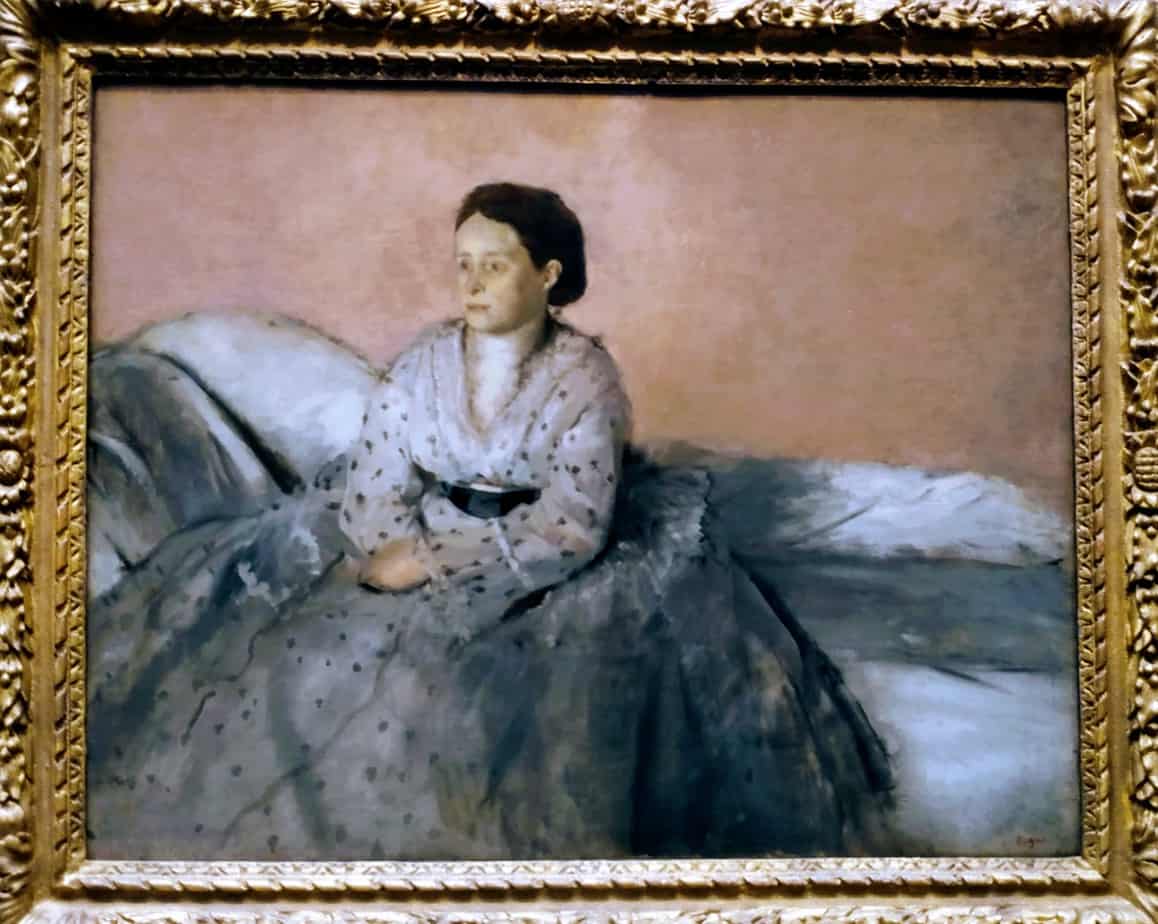
I always stop at this painting done in 1872 by Edgar Degas. It is a tender and loving portrait of his sister-in-law, Madame Rene de Gas. Painted during a visit to New Orleans to meet the American branch of his family, this portrait is unusual in that it doesn’t show an idealized view of Mme. De Gas, but reveals her sadness and loneliness. Her story is as sad as her portrait: she was a Civil War widow who had lost several children and her sight during the war.
Another favorite pastime is to sit in the galleries and observe visitors as they move in and out of the rooms, catching sight of paintings that they know intimately only through books and posters.
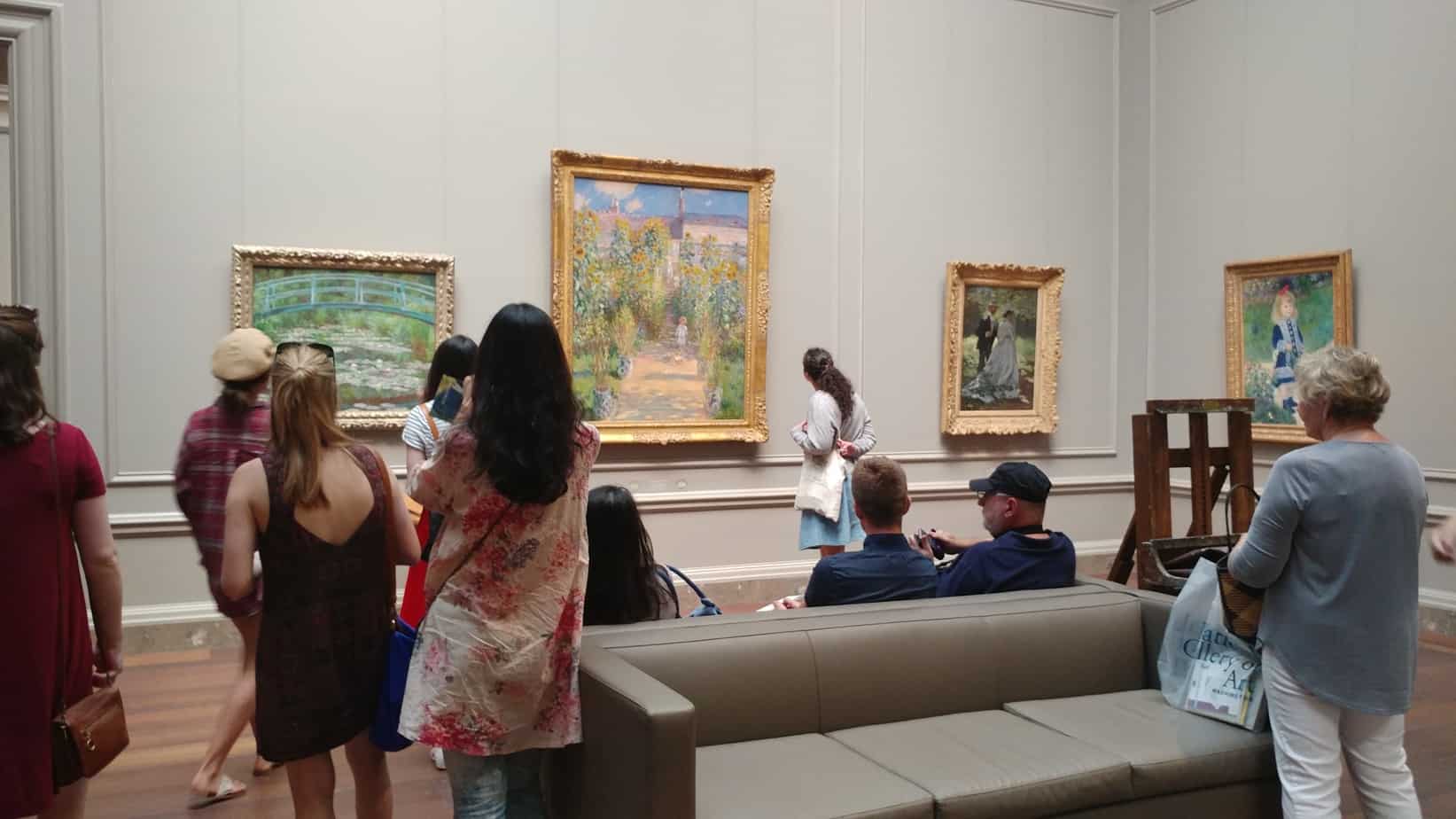
People will walk into this gallery with Monet’s Garden and Renoir’s child portraits, and simply stop to stare, with smiles of joy on their faces. I dare you to leave these galleries without a matching smile—their enjoyment is contagious! If you would like to have some of these same paintings in your home, the gigantic gift shops sell posters and frameable prints for very reasonable prices.
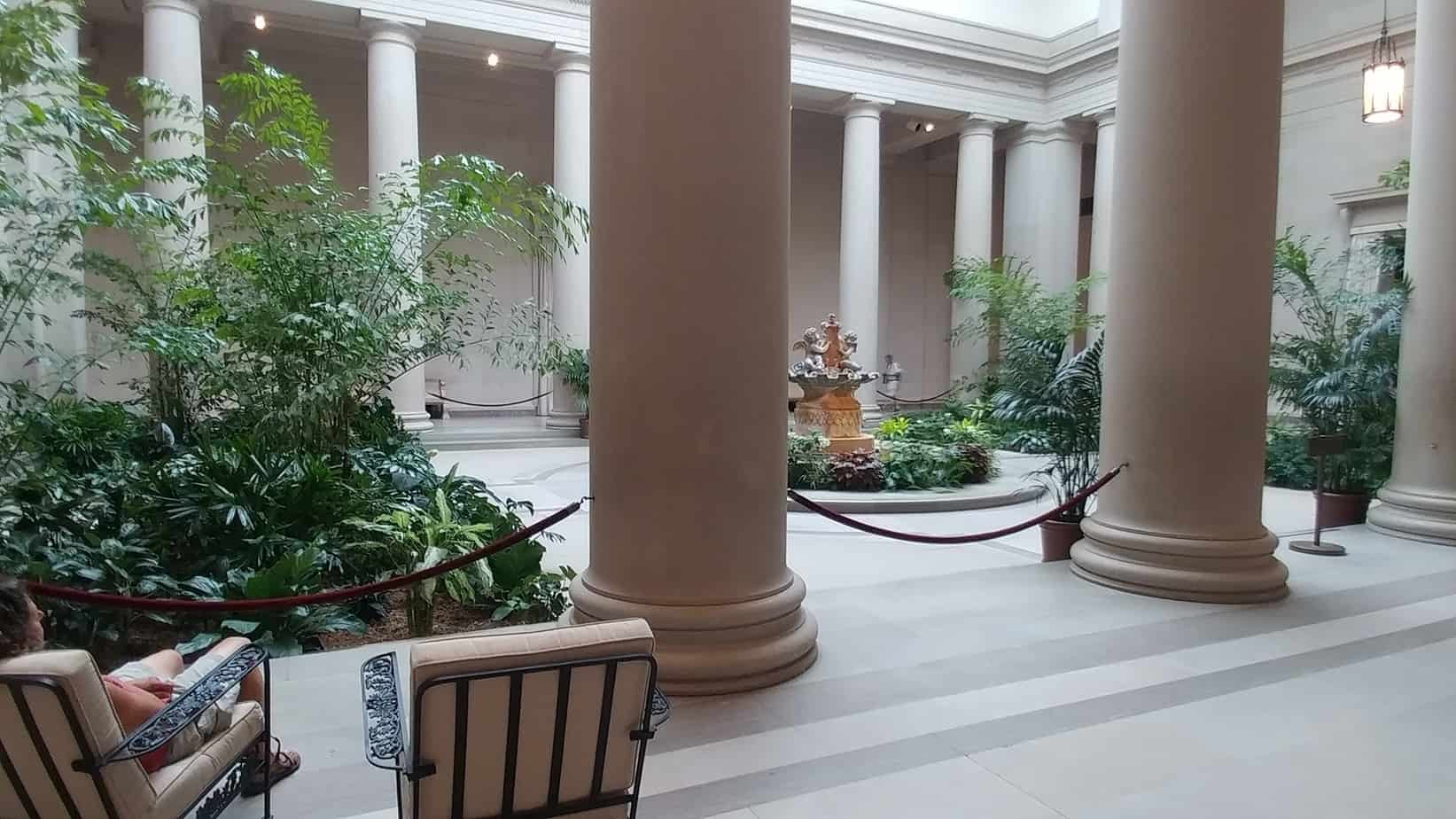
When your senses get overwhelmed by the colors and movements of the galleries, you will find an oasis of peace at the end of the great hall. There are ornate benches, some relaxing greenery, and a tinkling fountain that will sooth your mind and relax your feet. As I sit for a few minutes, I can easily imagine myself as a gracious hostess in a Belle Époque mansion who is resting in a garden house!
Things to know:
- You can easily reach the National Gallery of Art via metro (Archives stop). The West door entrance will definitely have the shortest entry line on weekends. Be prepared to open your purse and bags for inspection upon entry. You can then put your coat and bags into a free coat check room just beyond the entrance. If you have a backpack that you want to keep with you, you will have to wear it on one shoulder only to prevent accidental injuries to the paintings. A few years ago, a young visitor wearing a backpack was accidently bumped into a painting, causing a small tear in a Renoir masterpiece! There is never an entry fee for the National Gallery or to attend scheduled events. Go to www.nga.gov for a full schedule of events or to see the full collection.
- If you have a car, there are parking spots available on the streets around the Gallery, however it is usually difficult to find an open spot. There are also parking garages in the area, but they are expensive. I suggest that you sign up at www.spothero.com to find your parking options and to reserve a spot.
- If you are a fan of Dutch masters and Johann Vermeer, plan your visit between October 22, 2017 and January 21, 2018 when the Gallery will host an exhibit called Vermeer and the Masters of Genre Painting: Inspiration and Rivalry. This exhibit, which created high interest (and crowds) in Paris and Ireland earlier this year, will include ten of the only known 33 Vermeer paintings. Beware however, the last time there was a Vermeer exhibit in Washington DC, the lines for entry stretched around the block and lasted for hours. Be sure to come on a week day, and avoid visits around the holidays. For more information on this exhibit and Vermeer in general, go to www.essentialvermeer.com.




